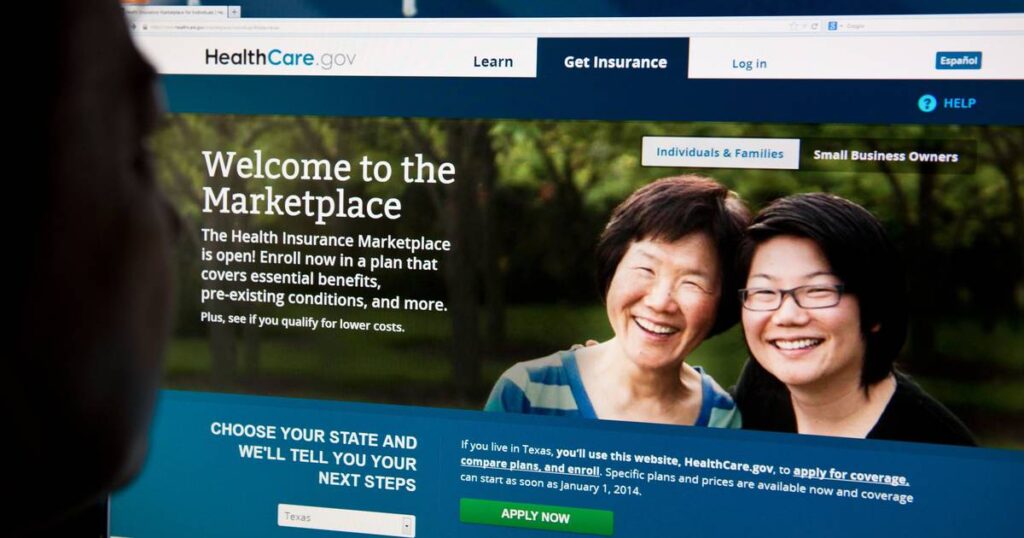Double-digit increases proposed for ACA health insurance plans

Illinois residents who buy health insurance through the Affordable Care Act exchange will likely see prices rise for next year — in some cases by double digit percentages.
Ten Illinois insurance companies that sell plans on the exchange, at healthcare.gov, are proposing average rate increases of about 3% to nearly 16% for plans in 2023. Consumers can begin shopping Nov. 1 for plans on healthcare.gov for next year.
The state’s largest health insurer, Blue Cross and Blue Shield of Illinois, is proposing an average rate increase of 5.3%. Celtic Insurance Co., which sells plans called Ambetter, is proposing an average rate increase of 13.7%. UnitedHealthcare of Illinois is proposing an average rate increase of nearly 16%.
Nearly 230,000 Illinois residents have individual Affordable Care Act plans through Blue Cross. About 54,000 people could be affected by the rate change from Celtic/Ambetter, and about 5,500 with UnitedHealthcare could be affected, according to documents insurers submitted with their proposals.
More than 320,000 Illinois residents bought health plans on the exchange for 2022. Most people in Illinois get health insurance through their jobs or government programs, such as Medicaid and Medicare.
Rates can vary based on a number of factors. This year, for example, a 21-year-old, nonsmoker living in Cook County pays about $242 a month, before any subsidies, for the lowest priced silver plan.
Blue Cross, Celtic and UnitedHealthcare blamed the proposed increases on rising medical costs, among other factors, in documents submitted with their proposals at healthcare.gov. The proposals will likely be finalized in the coming months.
Blue Cross, Celtic and UnitedHealthcare did not respond to requests for comment Monday.
Stephani Becker, associate director of health care justice at the Chicago-based Shriver Center on Poverty Law, said Illinois consumers should keep in mind that federal subsidies will again help to hold down costs of health insurance next year. Still, she said any increases are concerning.
“(The price of) everything is rising right now, so the last thing Illinois families need is for their health insurance costs to surge again,” Becker said. “It’s so critical for both our federal representatives and our state representatives to do whatever they can to rein in these costs.”
The increases follow years of price drops, and they come amid uncertainty about the future of the federal subsidies that help consumers offset the costs of insurance purchased through the Affordable Care Act exchange.
Many people have long received the subsidies to help lower the monthly costs of insurance purchased through the Affordable Care Act exchange. In Illinois, 85% of people who bought plans through the exchange in 2020 also received the subsidies, according to the Kaiser Family Foundation.
Amid the pandemic in 2021, President Joe Biden signed a bill into law making those subsidies more generous for many people and expanding the number of people eligible for them.
Now, those enhanced subsidies are slated to expire at the end of this year and revert back to their previous parameters. After much back-and-forth, Sen. Joe Manchin III, D-West Virginia, recently agreed to legislation aimed at fighting climate change that would also extend the enhanced tax credits through 2025. The legislation’s passage, however, is still not guaranteed.
Advocates of the enhanced subsidies fear that if they disappear, many consumers may drop their health insurance coverage because it will no longer be as affordable.
If the enhanced subsidies are not extended, people who make more than four times the federal poverty level would no longer be eligible for subsidies.
That means, for example, that in Illinois, a 40-year-old person who buys a silver-level plan on the exchange and makes $51,521 a year could see a premium increase of about 15%, according to an analysis by the Kaiser Family Foundation.
This content was originally published here.




Responses